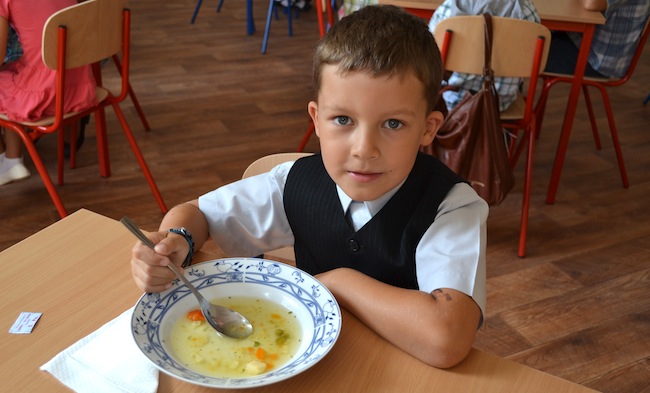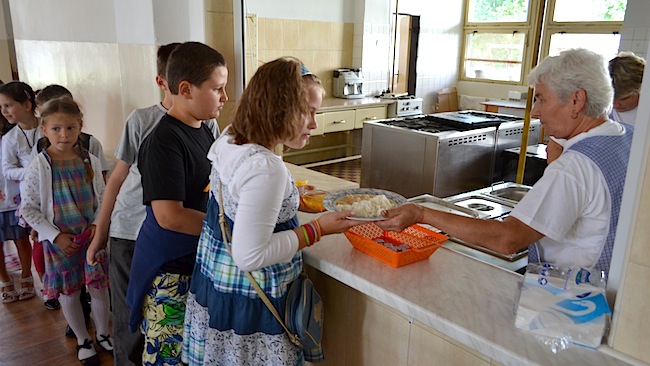
What are the basic principles of healthy-eating for a school-age child? How many fruits and vegetables should be included in his or her diet? How much fluid should a child drink and how much ‘power’ should breakfast provide for that child’s little body?
Lutheran elementary school in Martin is concerned about the good health of its pupils. Because one of the school’s guiding principles is Experiental Learning (learning through experience), pupils underwent a series of activities aimed at learning about healthy lifestyle. Students learned about the foods their bodies need, about the nutritional value of different foods, and which food choices could lead to nutritional deficiencies.
Another activity students participated in after a lecture about healthy eating was a drawing worksheet. The pupils were to draw their response to the information received during the lecture. The theme was “Remove Obesity and Live Healthier,” followed by “the Obesity Wall,” which was represented by the food pyramid. Afterward, the children unanimously decided that the food pyramid should decorate the walls of the school cafeteria. The last part of the project was very enjoyable. The students’ task was to prepare a snack for a classmate! The snack had to be made according to the principles of good nutrition and healthy eating. Even so, all students seemed to enjoy their snacks!

The aim of the “Remove Obesity and Live Healthier” project was to inform our students in grades 1-4 about the composition of their food, both the good, but also the harmful ingredients that can cause serious illness. Students were also taught about the changing demands of their bodies as they grow and the need to change food intake as well as energy expenditure.
One of the questions asked by students was about ‘second dinner.’ What should we do if our five meals a day are not enough and we are actually hungry in the evening? We learned (with great pleasure!) that a snack after dinner is permitted. But it is only permitted for school-age children! The important thing is food choice—in the later evening, we should choose only dairy products, fruits, or vegetables.
At the conclusion of the project, “we decided that, in addition to drinking water, we can help our bodies most by limiting intake of sweets and sweet drinks, as well as limiting fried, salty, and fatty foods,” reported project coordinator and 4th grade teacher, Catherine. We hope that students in Lutheran elementary school in Martin will succeed in these prudent resolutions!



It’s great that the health of kids are prioritised and there are programmes that focus on building them up through food. It’s such an amazing feeling that various sectors have finally stepped up for the sake of the kids.